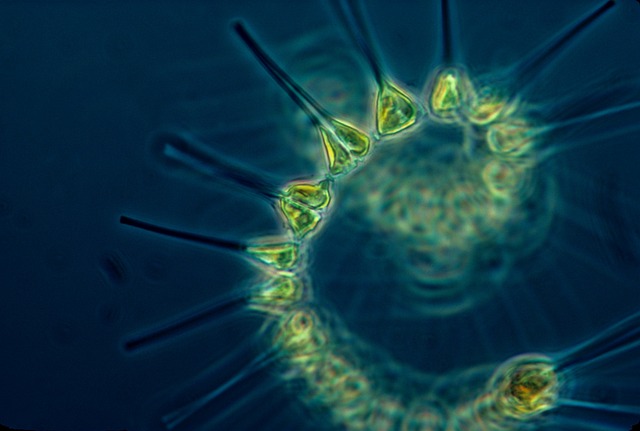The Impact of Phytoplankton on Melting Ice: A Climate Change Concern
As we witness the dramatic effects of climate change unfolding before our eyes, it’s essential to understand the profound connections between various elements of our planet. One particularly fascinating player in this complex scenario is phytoplankton, the microscopic organisms that flourish in the world’s oceans. These tiny, often unnoticed, creatures are not just the foundation of the marine food web; they play a crucial role in influencing global climate patterns, particularly concerning melting ice.
Phytoplankton are responsible for producing a significant portion of the world’s oxygen, roughly equivalent to that produced by terrestrial forests. However, their role extends far beyond providing us with breathable air. Through photosynthesis, they absorb carbon dioxide, effectively acting as a natural carbon sink. In a world increasingly plagued by rising CO2 levels, the importance of these marine organisms cannot be overstated.
But how does phytoplankton relate to the alarming phenomenon of melting ice? The answer lies in the delicate balance of our Earth’s ecosystem. As global temperatures rise, sea ice in polar regions begins to melt. This melting not only contributes to rising sea levels, which threatens coastal communities but also alters the habitat of phytoplankton, which thrive in cold, nutrient-rich waters. The reduction of ice cover changes the amount of sunlight that penetrates the ocean surface, affecting the growth rates of these tiny but mighty organisms.
Interestingly, phytoplankton can also influence the ice melting process itself. Research indicates that certain species of phytoplankton, particularly those that thrive in the melting ice’s nutrient-rich runoff, could actually affect albedo—the reflectivity of the Earth’s surface. When the ice melts and exposes darker ocean waters, sunlight is absorbed rather than reflected, leading to further warming and accelerated melting. Phytoplankton can exacerbate this phenomenon, as blooms in warmer waters can further darken the ocean surface.
Moreover, the presence of phytoplankton in the ocean contributes to biogeochemical cycles that affect atmospheric conditions. Changes in their populations can lead to variations in weather patterns, nutrient availability, and even the behavior of larger marine organisms. As climate change continues to cause destabilization, the resulting shifts in phytoplankton populations could yield unforeseen consequences for both marine ecosystems and terrestrial climates.
The plight of phytoplankton and their influence on melting ice exemplifies the interconnectedness of our climate. Each time we observe the ice caps receding, we should consider the myriad of reactions that this event triggers throughout the biosphere. By recognizing the importance of these tiny organisms in the fight against climate change, we can better grasp the urgency of protecting our environment. As stewards of the planet, it is our responsibility to mitigate the factors contributing to climate change, ensuring that these remarkable creatures can continue to thrive and perform their vital functions in the ecosystem.
In summary, the fate of phytoplankton is tightly intertwined with the ongoing struggle against climate change and the alarming phenomenon of melting ice. Understanding their role can inspire a collective effort to address these critical issues, paving the way for a more sustainable and resilient future.



